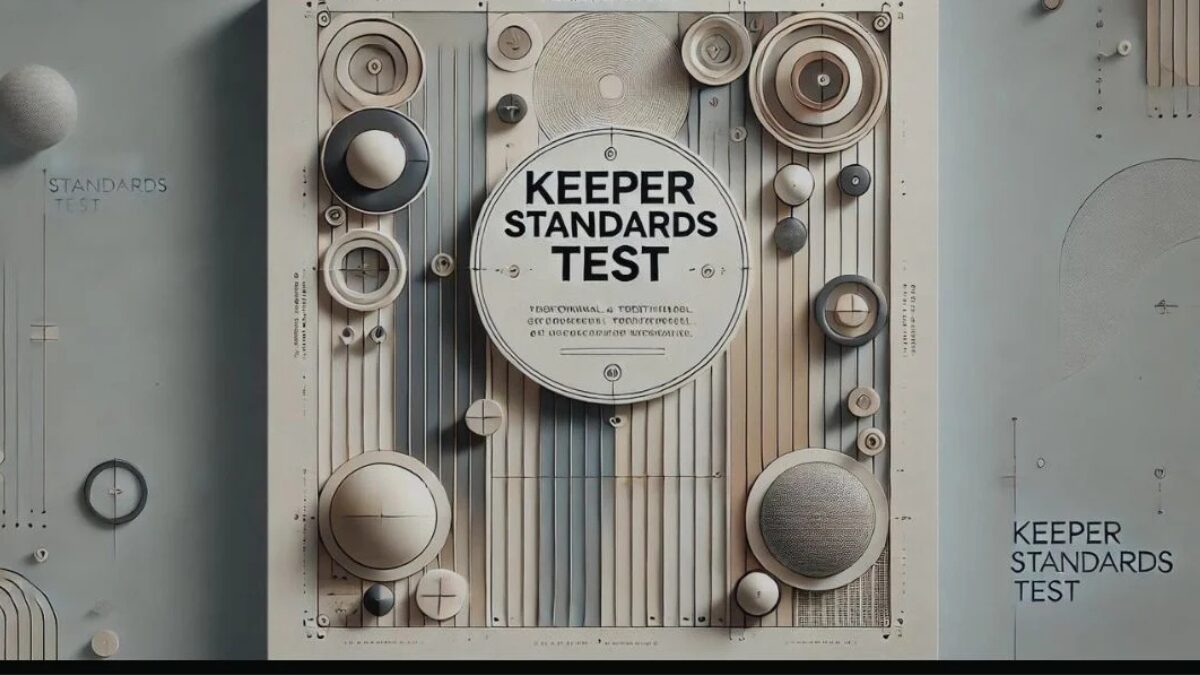Education
The Ultimate Guide to Super Sonic Coloring Pages

Coloring books have been a beloved pastime for generations of children, providing not only entertainment but also numerous developmental benefits. Enter Super Sonic Coloring Pages, a fun and engaging way for children to enjoy their favorite speedy blue hedgehog while honing vital life skills. This comprehensive guide will delve into the world of Super Sonic Coloring Pages, covering their history, benefits, creation tips, sharing methods, and the impact they have on children’s growth and development.
Introduction to Super Sonic Coloring Pages
Super Sonic, the iconic blue hedgehog from the Sonic the Hedgehog video game series, has captured the hearts of children and adults alike since his debut in 1991. As a character known for his super speed and heroic adventures, Sonic has become a cultural phenomenon, inspiring various forms of media, including cartoons, comic books, and an array of merchandise. Among these, one particularly educational and entertaining form is the Super Sonic Coloring Pages.
Coloring pages featuring Sonic and his friends provide an excellent platform for children to express their creativity, improve their motor skills, and even enhance their knowledge of the world around them. For parents and educators, these coloring pages are invaluable tools that can make learning fun and engaging.
The Benefits of Coloring for Children
Coloring is more than just a fun activity for children; it’s a powerful developmental tool. Here are some of the key benefits coloring brings to young minds:
Cognitive Benefits
Enhances Focus and Concentration: Coloring requires children to pay attention to details and stay within the lines, which helps improve their focus and concentration over time.
Improves Color Recognition and Awareness: By selecting and using different colors, children learn about color theory and how colors interact with one another.
Encourages Problem-Solving Skills: Deciding what colors to use and how to approach a coloring page fosters critical thinking and problem-solving abilities.
Emotional Benefits
Reduces Stress and Anxiety: Coloring is a calming activity that can help children manage stress and anxiety, providing a sense of relaxation and mindfulness.
Boosts Self-Esteem: Completing a coloring page gives children a sense of accomplishment, boosting their confidence and self-esteem.
Enhances Emotional Expression: Through the use of colors and artistic choices, children can express their emotions and feelings in a non-verbal way.
Physical Benefits
Develops Fine Motor Skills: Holding and maneuvering coloring tools, such as crayons or colored pencils, helps children develop fine motor skills and hand-eye coordination.
Improves Handwriting Skills: The precision required in coloring within the lines translates to better handwriting skills as children grow older.
Encourages Healthy Screen Time Balance: In an age where screens dominate children’s attention, coloring provides a valuable screen-free alternative that promotes creativity and physical activity.
How to Create Engaging Super Sonic Coloring Pages
Creating compelling Super Sonic Coloring Pages that will captivate and educate children involves a mix of creativity, knowledge of the subject, and an understanding of what keeps children engaged. Here are some tips to get you started:
Know Your Audience
Age Appropriateness: Tailor the complexity of the coloring pages to the age group you are targeting. Younger children will appreciate simpler designs, while older kids might enjoy more detailed scenes.
Interest-Based Themes: Incorporate popular themes and characters from the Sonic universe. Think about including Sonic’s friends like Tails, Knuckles, and Amy Rose, as well as iconic scenes from the games.
Design Tips
Bold Outlines: Ensure the outlines are bold and clear, making it easier for children to stay within the lines and enjoy the coloring process.
Variety of Scenes: Provide a mix of action-packed scenes, calm settings, and character close-ups to maintain interest and cater to different preferences.
Educational Elements: Sneak in educational elements such as numbers, letters, or shapes to add an extra layer of learning to the coloring activity.
Engaging Content
Interactive Features: Include interactive elements like mazes, connect-the-dots, or color-by-number sections to keep the pages engaging and educational.
Seasonal Themes: Create themed coloring pages for holidays and seasons to keep the content fresh and relevant throughout the year.
Storytelling: Develop short stories or scenarios featuring Sonic and his friends to accompany the coloring pages, sparking imagination and creativity.
Sharing and Printing Super Sonic Coloring Pages
Once you’ve created your Super Sonic Coloring Pages, the next step is making them accessible to children, parents, and educators. Here are some recommendations for sharing and printing your masterpieces:
Online Platforms
Dedicated Websites: Set up a website or a dedicated section on your existing site to host and share your coloring pages. Ensure the site is user-friendly and easy to navigate.
Social Media: Utilize social media platforms like Facebook, Instagram, and Pinterest to share your coloring pages. Use relevant hashtags and engage with your audience to increase visibility.
Educational Platforms: Partner with educational websites and apps that cater to children and parents, offering your coloring pages as free downloadable resources.
Printable Formats
High-Resolution PDF Files: Provide high-resolution PDF files that can be easily downloaded and printed at home or in the classroom.
Printable Bundles: Create themed bundles of coloring pages that can be downloaded together, offering a cohesive and engaging experience.
Print-On-Demand Services: Consider using print-on-demand services to offer physical copies of your coloring books, making it convenient for those who prefer professionally printed materials.
Accessibility and Usability
Easy Download Instructions: Ensure clear and simple download instructions are available, making it easy for users to access your coloring pages.
Mobile-Friendly Options: Optimize your website and download options for mobile devices, catering to parents and educators on the go.
Printer-Friendly Designs: Design your coloring pages to be printer-friendly, using standard paper sizes and minimal ink to make printing convenient and cost-effective.
Super Sonic Coloring Page Challenges and Contests
Engaging children through challenges and contests can make the coloring experience even more exciting and rewarding. Here are some ideas to inspire creativity and participation:
Coloring Challenges
Weekly Themes: Introduce weekly themes or prompts, encouraging children to color pages based on specific topics or scenarios.
Creative Color Combinations: Challenge children to use unique and creative color combinations, pushing the boundaries of their imagination.
Speed Coloring: Organize timed coloring challenges, where children race against the clock to complete their pages, adding an element of fun and excitement.
Contests and Competitions
Best Colorist Awards: Host coloring contests with different age categories and award prizes for the best entries. Prizes could include art supplies, Sonic merchandise, or featured spots on your website.
Fan Art Features: Invite children to create their own Super Sonic-themed coloring pages, showcasing their artwork on your platform and social media channels.
Interactive Voting: Allow your audience to vote on their favorite coloring pages, fostering a sense of community and engagement.
Educational Rewards
Certificates of Achievement: Provide printable certificates for participants, recognizing their effort and creativity.
Progressive Learning: Create a series of challenges that progressively increase in complexity, rewarding children as they advance and improve their skills.
Collaborative Projects: Encourage group coloring activities or classroom projects, promoting teamwork and collaboration.
The Impact of Super Sonic Coloring Pages
The positive impact of Super Sonic Coloring Pages extends beyond entertainment. Here are some real-life examples and testimonials that highlight their benefits:
Real-Life Examples
Classroom Success: Teachers have reported using Super Sonic Coloring Pages as effective tools for engaging students during lessons, improving focus and participation.
Therapeutic Uses: Coloring pages have been used in therapeutic settings, helping children with anxiety, autism, and other developmental challenges find comfort and expression.
Family Bonding: Parents have shared stories of quality family time spent coloring together, creating lasting memories and strengthening bonds.
Testimonials
Educator Perspective: “Incorporating Super Sonic Coloring Pages into my curriculum has transformed my classroom. The students are more engaged, and the educational elements seamlessly blend with fun activities.” – Mrs. Johnson, Elementary School Teacher.
Parent Feedback: “My kids absolutely love the Super Sonic Coloring Pages! It’s a great way for them to unwind after school, and I’ve noticed significant improvements in their fine motor skills.” – Sarah M., Parent.
Child’s Experience: “I love coloring Sonic because it makes me feel like I’m part of his adventures. My favorite page is the one with Sonic and Tails racing through the Green Hill Zone!” – Timmy, Age 7.
You May Also Like: MCS App Portal: Your Hub for School App
Conclusion
Super Sonic Coloring Pages are more than just a fun activity; they are a powerful tool for children’s development and education. From enhancing cognitive skills to providing emotional benefits and improving physical abilities, the advantages of coloring are numerous.
By creating engaging and educational coloring pages, sharing them effectively, and incorporating challenges and contests, we can foster a love for learning and creativity in children. The impact of these coloring pages is evident in the positive feedback from parents, educators, and children alike, making them an invaluable resource for any child’s growth.
So, whether you’re a parent, educator, or simply a fan of Sonic, dive into the world of Super Sonic Coloring Pages and watch as they transform ordinary moments into extraordinary learning experiences.
Ready to get started? Download your Super Sonic Coloring Pages today and join the adventure!
Frequently Asked Questions
What are Super Sonic Coloring Pages?
Super Sonic Coloring Pages are high-quality, printable coloring pages featuring characters and scenes from the popular Sonic the Hedgehog franchise. They come in various themes and designs, offering an engaging and creative activity for children.
How can I download and print Super Sonic Coloring Pages?
Downloading and printing Super Sonic Coloring Pages is easy. Simply visit our website, select your preferred coloring pages, and follow the clear download instructions. Once downloaded, you can print them using a standard home printer with minimal ink usage.
Are there any educational benefits to using Super Sonic Coloring Pages?
Yes, there are numerous educational benefits to using Super Sonic Coloring Pages. These coloring activities can help children develop fine motor skills, hand-eye coordination, and cognitive abilities. They also promote creativity and provide a fun way to unwind and relax.
Can I host a Super Sonic Coloring Page contest in my classroom or community?
Absolutely! Hosting a Super Sonic Coloring Page contest can be a fantastic way to engage children and foster a sense of community. You can set up contests with themes, award prizes for the best entries, and even feature winning artwork on your social media channels or website.
Are Super Sonic Coloring Pages available for mobile devices?
Yes, our website and coloring pages are optimized for mobile devices. Parents and educators on the go can easily download and access the coloring pages from their smartphones or tablets, making it convenient to print or view them digitally.
Education
Oklahoma Safe Driving Laws you Need to Know

Oklahoma drivers take risks each time they get on the road. Fortunately, the state’s legislature has enacted several laws that keep the public safe. The following are some of Oklahoma’s safe driving laws.
No Distracted Driving
Distracted driving is any activity that takes the driver’s attention away from the road. Shifting focus on something else can be dangerous even if the driver only does it for fewer than 10 seconds. Not only does distracted driving increase the risk of a collision, but the driver may be forced to make a sudden maneuver that may violate other traffic laws. For example, a driver who is distracted may miss a red light and be forced to illegally proceed through the intersection. Examples of distracted driving include:
- Eating
- Drinking
- Texting
- Talking on the phone
- Focusing on other people in the vehicle
Moving Over for Emergency Vehicles
Oklahoma law requires drivers to change lanes when they see a vehicle with flashing lights on the side of the highway. If moving over is physically impossible, drivers are required to slow down. The objective of the “Move Over” law is to protect emergency workers, maintenance crews, and people who are on the side of the road receiving assistance. Drivers who violate the law may face fines from $1,000 for a first offense to $2,500 for second-time offenders.
Required Protective Gear for Motorcyclists
Motorcyclists in Oklahoma are only required by law to wear a helmet if they are younger than 18. However, state law does require all motorcycle riders to use eye protection. Motorcycle owners have options when it comes to complying with law. Eye protection can be goggles, glasses, or a windscreen on the motorcycle. Other motorcycle safety requirements restrict the height of motorcycle handlebars to being no higher than eye level. The state also requires every motorcycle to be equipped with a compliant horn.
Yielding the Left Lane
A unique law that many other states do not have is Oklahoma’s Left-Lane Law. The statute limits use of the left lane to drivers who want to make a pass to overtake another vehicle and vehicles that have to change lanes to avoid construction and emergency vehicles. Drivers may also use the left lane if traffic conditions create the necessity to change lanes.
Following Oklahoma’s safety laws significantly reduces the likelihood of drivers becoming involved in an accident. Beyond improving road safety, traffic laws reduce congestion and eases the daily commute for drivers, motorcyclists, truckers, and pedestrians.
Education
Florida Distracted Driving Laws

States across the U.S. compete with one another to impose the stiffest penalties on those apprehended for driving under the influence (DUI) or driving while intoxicated (DWI). Rightly so, given the 13,000 to 14,000 deaths annually that can be attributed to drunk driving. Yet these tough sanctions beg the question: what is the point of being sober if the driver’s attention is not on the road in any case? States like Florida have considered this subject and answer with stern legal discipline for distracted driving. After all, a driver in full possession of wits is nonetheless a danger when the mind is inattentive.
While distracted driving is rooted in varied sources, the law in the Sunshine State applies to specific behaviors that give solid evidence to the charge of distraction. In passing provisions against distracted diving, the state legislature understood that there were three categories of diversion from responsible automobile operation.
- Manual distraction: When the driver removes hands from the steering wheel to perform another task.
- Visual distraction: When the driver directs sight to something other than the road and surrounding traffic.
- Cognitive distraction: When the mind is pre-occupied and absent from the moment.
The “Put It Down” Law
The Wireless Communications While Driving Law passed in 2019. It stipulates, among other things:
- Drivers are forbidden to type into a wireless device while the vehicle is in motion.
- Drivers may not read texts or emails on any device while the car or truck is in motion.
- Law enforcement officers are directed to apprehend and cite drivers who are seen doing the above.
This law covers acts of cognitive, manual and visual distraction which must be testified to by the intercepting officer. Texting and emailing from a smartphone, android or other handheld device are two of the most common practices that embrace all three categories. Drivers caught violating the texting while driving law can receive increasing fines and points on their driver’s license that could lead to a suspension.
Exceptional Circumstances
There are exemptions from this law for certain persons and under certain conditions.
- Emergency services personnel and first responders — in the course of their official duties — need to remain in immediate touch with one another and with those who need assistance.
- Drivers who observe potentially dangerous or criminal acts can notify the police with mobile devices.
- Drivers may consult their devices for GPS and navigation assistance.
- Drivers can make voice-activated hands-free calls with their devices.
- Drivers may text and email while riding in a self-driving automobile.
Other Forms of Distracted Driving
Governments can pass statutes relating to cell phones and electronic devices because such behavior is visible and verifiable. Yet there are other distractions that also impact dedicated attention to the road. Children in the back seat; eating while driving; “rubbernecking” at other drivers or accidents; self-grooming; finding a radio station; and managing an unsecured dog or cat can all demand the driver’s concentration to the detriment of safe driving.
Education
Raise Your Game with the Keeper Standards Test

In the fast-paced world of soccer, goalkeepers are the unsung heroes who often hold the fate of a match in their hands. While strikers and midfielders may bask in the limelight, it’s the goalkeepers who bear the weight of the team’s defense. But how do we ensure that these pivotal players meet the necessary standards? Welcome to the world of the Keeper Standards Test—a comprehensive benchmark designed to evaluate and enhance the skills of goalkeepers.
A Brief History of Goalkeeping
The role of the goalkeeper has evolved significantly over the years. Early on in soccer history, goalkeepers were mainly responsible for stopping shots. However, as the game became more sophisticated, their role expanded. Modern goalkeepers must not only excel in shot-stopping but also possess excellent footwork, communication skills, and the ability to read the game. This evolution has paved the way for formalized testing methods to ensure keepers are up to scratch.
In the earlier days, goalkeepers relied heavily on instinct and raw talent. With limited specialized training techniques, many relied on natural ability and experience gained from match play. The advent of coaching methodologies and advanced training tools brought about a shift towards a more structured approach. The introduction of the Keeper Standards Test has become an essential tool in setting benchmarks for aspiring goalkeepers.
Today, goalkeepers are often the most analyzed and scrutinized players on the pitch. With the Keeper Standards Test, clubs and academies have a reliable method to assess where their keepers stand and identify areas of improvement. This makes it a crucial part of the developmental process for goalkeepers at all levels.
What is the Keeper Standards Test?
The Keeper Standards Test is a comprehensive evaluation encompassing various aspects of goalkeeping performance. It assesses technical skills, physical fitness, cognitive ability, and mental resilience. By providing a structured framework, the test helps identify strengths and weaknesses, allowing for targeted training and development.
The test is divided into several key components, each designed to measure specific aspects of goalkeeping. These components range from basic shot-stopping techniques to advanced game-reading abilities. By breaking down the role into these elements, the Keeper Standards Test provides a holistic view of a goalkeeper’s capabilities.
One of the unique features of the Keeper Standards Test is its adaptability. Whether you’re a beginner or a seasoned professional, the test can be tailored to suit your level. This flexibility ensures that it remains relevant across various levels of play, making it a valuable tool for coaches and players alike.
Importance of Setting Standards
Setting standards in goalkeeping is essential for several reasons. First and foremost, it provides a clear benchmark for performance. By establishing what is expected, goalkeepers have a target to aim for, which can drive motivation and improvement.
Secondly, clear standards help coaches and trainers identify areas of weakness. With a structured evaluation process, it’s easier to pinpoint specific skills that need attention. This targeted approach allows for more efficient training, leading to better results on the field.
Finally, setting standards promotes consistency across different levels of play. From youth teams to professional clubs, having a uniform standard ensures that goalkeepers are evaluated fairly and accurately. This consistency is crucial for maintaining the quality of goalkeeping talent across the board.
Breaking Down the Test
The Keeper Standards Test can be broken down into several key components. Each section focuses on a different aspect of goalkeeping, ensuring a comprehensive evaluation. Let’s take a closer look at what each component entails.
Technical Skills
Technical skills form the foundation of a goalkeeper’s performance. This section of the test evaluates essential skills such as shot-stopping, handling, and distribution. By assessing these abilities, coaches can ensure that their goalkeepers possess the fundamental skills needed to excel.
Shot-stopping is often the most critical aspect of goalkeeping, and this section of the test places a heavy emphasis on it. Goalkeepers are assessed on their ability to make saves from various angles and distances, ensuring they are well-rounded in this crucial area.
Distribution, while not always associated with goalkeeping, is becoming increasingly important. The Keeper Standards Test evaluates a goalkeeper’s distribution accuracy, ensuring they can effectively start attacks and relieve pressure on their team.
Physical Fitness
Physical fitness is another critical component of the Keeper Standards Test. Goalkeeping requires strength, agility, and endurance, all of which are assessed in this section. By evaluating these physical attributes, the test ensures that goalkeepers are physically prepared for the demands of a match.
Endurance testing is a key part of this section, as goalkeepers must remain alert and focused throughout the entire game. This component assesses their ability to maintain performance levels over an extended period, which is crucial for success on the field.
Agility is also a significant focus. Goalkeepers are tested on their ability to move quickly and efficiently, ensuring they can respond to shots and crosses with speed and precision. This aspect of the test highlights the importance of agility training for aspiring goalkeepers.
Cognitive Ability
Cognitive ability is a crucial aspect of modern goalkeeping. The Keeper Standards Test assesses a goalkeeper’s decision-making, reaction time, and game-reading skills. By evaluating these cognitive attributes, the test ensures that goalkeepers can think quickly under pressure.
Decision-making is perhaps the most critical aspect of this section. Goalkeepers are constantly faced with split-second decisions that can determine the outcome of a match. This component assesses their ability to make the right call in high-pressure situations.
Reaction time is another key focus. Goalkeepers must be able to react quickly to shots and changes in play, and this aspect of the test measures their ability to do so effectively. Quick reflexes are essential for success between the posts.
Mental Resilience
Mental resilience is often overlooked but is a vital component of a successful goalkeeper. The Keeper Standards Test assesses a goalkeeper’s mental toughness, concentration, and ability to bounce back from setbacks.
Concentration is crucial for goalkeepers, as they must remain focused throughout the entire game. This aspect of the test evaluates their ability to maintain concentration, even under pressure.
Mental toughness is another key focus. The test assesses a goalkeeper’s ability to handle adversity and stay composed in challenging situations. This resilience is essential for success in the high-pressure world of goalkeeping.
Key Benefits of the Keeper Standards Test
The Keeper Standards Test offers several benefits for goalkeepers and coaches alike. First and foremost, it provides a clear and structured framework for evaluating performance. This clarity allows for targeted training and development, leading to improved results on the field.
Secondly, the test promotes consistency across different levels of play. With a standardized evaluation process, goalkeepers are assessed fairly and accurately, ensuring a level playing field for all.
Finally, the test helps identify areas of strength and weakness. By pinpointing specific skills that need attention, coaches can create tailored training programs that address individual needs. This targeted approach leads to more efficient training and better outcomes.
How to Prepare for the Test
Preparing for the Keeper Standards Test requires a comprehensive approach. Goalkeepers should focus on developing both their technical skills and physical attributes. By training in these areas, they can ensure they are well-prepared for the demands of the test.
Technical skills should be honed through regular practice and drills. Goalkeepers should focus on improving their shot-stopping, handling, and distribution, ensuring they have the fundamental skills needed to excel.
Physical fitness is another essential area of focus. Goalkeepers should engage in regular fitness training to improve their strength, agility, and endurance. This preparation will ensure they are physically ready for the demands of the test.
The Role of Coaches and Trainers
Coaches and trainers play a crucial role in the Keeper Standards Test. They are responsible for evaluating goalkeepers, identifying areas of improvement, and creating targeted training programs. By providing guidance and support, coaches can help their goalkeepers reach their full potential.
Trainers should focus on developing comprehensive training plans that address both technical skills and physical fitness. By creating tailored programs, they can ensure that goalkeepers are well-prepared for the demands of the test.
Coaches should also provide regular feedback and support. By offering constructive criticism and encouragement, they can help goalkeepers build confidence and improve their performance.
Conclusion
The Keeper Standards Test is an essential tool for evaluating and developing goalkeepers. By providing a structured framework for assessment, it ensures that goalkeepers possess the necessary skills and attributes to excel on the field. Whether you’re a goalkeeper or a coach, the Keeper Standards Test offers valuable insights and opportunities for growth.
In conclusion, the Keeper Standards Test is a crucial component of modern goalkeeping. By setting clear benchmarks and providing targeted training, it ensures that goalkeepers are well-prepared for the demands of the game. Whether you’re an aspiring goalkeeper or a seasoned coach, the Keeper Standards Test offers valuable insights and opportunities for growth. Consider implementing this test into your training regimen to see measurable improvements in your performance on the field.
1. What is the Keeper Standards Test designed to measure?
Answer:
The Keeper Standards Test is designed to evaluate a goalkeeper’s proficiency in technical skills, physical fitness, cognitive ability, and mental resilience. By assessing these areas, the test provides a comprehensive overview of a goalkeeper’s overall performance and readiness for high-level play.
2. How often should goalkeepers take the Keeper Standards Test?
Answer:
The frequency of taking the Keeper Standards Test can vary based on individual and team needs. However, it is generally recommended that goalkeepers undergo the test at least once or twice a year to monitor their development, identify areas for improvement, and track progress over time.
3. Can the test be customized for different levels of play?
Answer:
Yes, the Keeper Standards Test can be adapted to suit various levels of play, from youth leagues to professional settings. Adjustments can be made to the test’s difficulty or focus areas to ensure it is challenging and relevant to the specific level being assessed.
4. What are the main benefits of using a standardized test for goalkeepers?
Answer:
Using a standardized test, like the Keeper Standards Test, ensures consistency in evaluation, facilitates targeted training programs, and provides clear benchmarks for performance assessment. It enables coaches and players to identify strengths and areas needing improvement, thus enhancing development and performance outcomes.
5. What role do mental skills training play in preparing for the test?
Answer:
Mental skills training is essential for developing mental resilience, concentration, and decision-making abilities. Goalkeepers should incorporate mental conditioning into their training regimen to enhance their focus, composure under pressure, and ability to make quick, effective decisions during the test and in actual match scenarios.
-

 Marketing6 months ago
Marketing6 months agoUnlocking the Potential of FSI Blogs: A Comprehensive Guide
-

 Health8 months ago
Health8 months agoAnxiety: Causes and Solutions
-

 Blog8 months ago
Blog8 months agoThe Seating Arrangement Surprise: A Story About Sitting Next to a Scary Yakuza
-

 Blog8 months ago
Blog8 months agoUnderstanding Chancerne: Unveiling the Science Behind this Enigmatic Phenomenon
-

 Tech7 months ago
Tech7 months agoOprekladač: A Comprehensive Guide to AI Translation Technology
-

 Tech8 months ago
Tech8 months agoUnveiling the Wonders of divijos: Revolutionizing Our World
-

 Health6 months ago
Health6 months agoDiscover the World of Ztec100.com: Your Ultimate Guide to Tech, Health, and Insurance
-

 Business8 months ago
Business8 months agoUnderstanding Trading: Unveiling the Dynamics of Financial Markets





